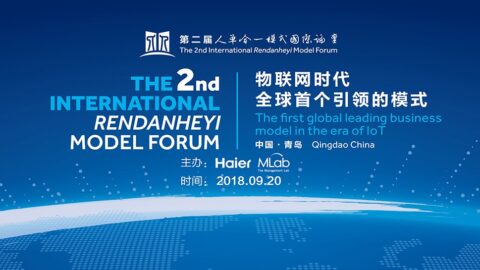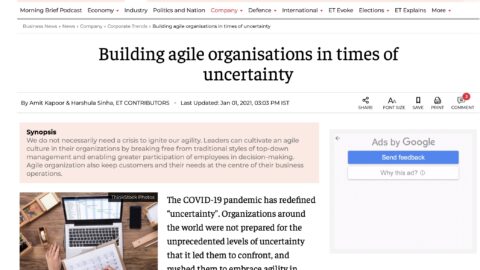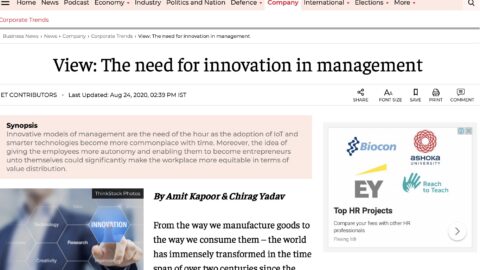In nature, Internet of Things is the Internet of people. Haier ecosystem brand is able to overthrow traditional product brand and platform brand mainly because it adopts the Rendanheyi Model to subvert the traditional management model. This model was first proposed by Zhang Ruimin, CEO and Chairman of Haier Group Board of Directors on September 20, 2005. Different from means of competition in common sense, traditional business or profitability model, Rendanheyi Model stays in line with the “zero distance”, “decentralization” and “de-intermediation” characteristics of the IoT era. From the perspectives of enterprises, employees and users, Haier makes continuous and dynamic reforms in its strategic positioning, organizational structure, operational processes and resource allocation. In this process, it keeps forming and evolving the iterative model of Internet enterprise innovation.
The literal interpretation of Rendanheyi: “Ren” refers to the employees; “Dan” refers to the user value; and “Heyi” means combining the user value realization with created user value. The basic meaning of Rendanheyi is that each employee should directly face users, create user value, and realize their own shared value by creating value for users. Employees are not subordinate to posts. Instead, they exist because of users. Without user value, there would be no employees.
In the Rendanheyi model, everyone’s salary comes from user evaluation, Paid by Users instead of evaluation by superiors and Paid by Enterprise. In traditional enterprises, salaries are determined by the posts and ranks. The employees execute the command of the superior, who evaluates their performance. And the salary is Paid by Enterprise. Haier’s salary mechanism is featured by Paid by Users; employees following users and creating value for users, value is evaluated by users; and salary comes from value-added sharing created for users.
Rendanheyi: Origin and Its ultimate goal
The ultimate goal of the Rendanheyi model is to enable every entrepreneur to face their users directly, create value for them, and cultivate them into lifelong users. In the process of creating value for the user, the employee is paid by the user, thus aligning the value of the employee with the value they create for the user.
In traditional bureaucratic organizations, employees only listen to their superiors and have no right to make decisions. Everything they do has to be reported to their leaders. The organization is driven by top-down KPI assessments and rewards and penalties. As employees cannot face users directly nor respond to their needs in a timely fashion, they are limited in the initiative they can use. To encourage initiative and creativity, Haier started the reform around the Rendanheyi model.























